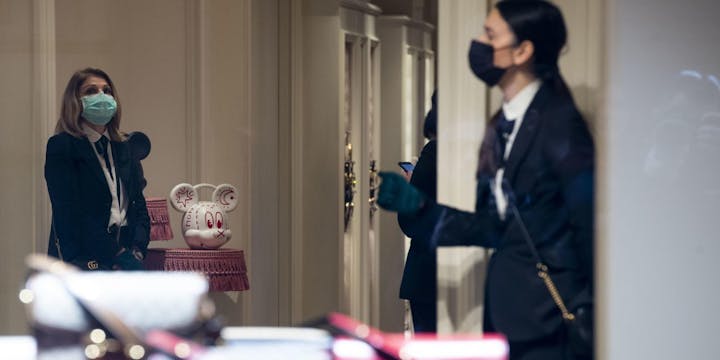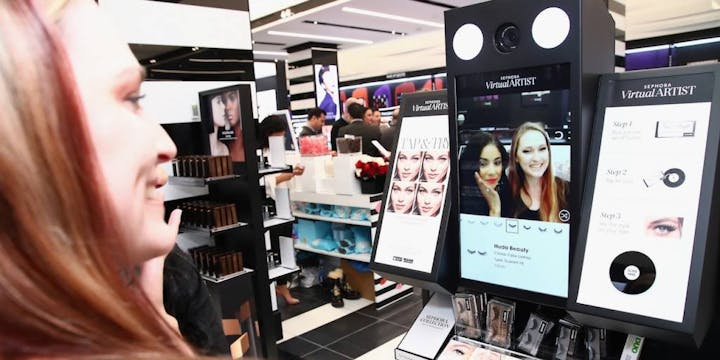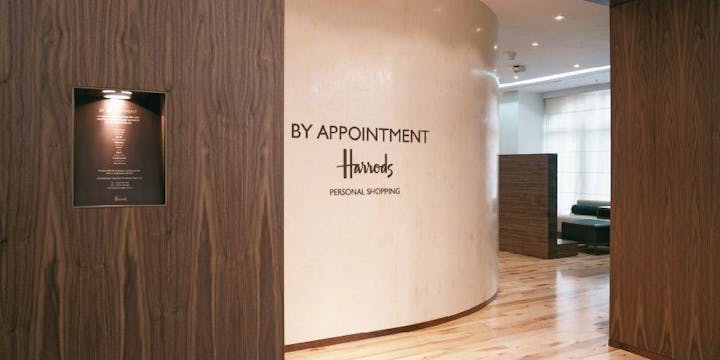3 X REIMAGINED RETAIL TRENDS FOR A POST-PANDEMIC WORLD
The world is slowly opening up again for business, with big shifts already underway as society evolves from a relatively care-free world to one emerging from lockdown.
Social distancing and habits formed during the pandemic are becoming our new way of life. We consider three ways the retail sector is set to adapt to new consumer behaviours and needs.

1. CURB APPEAL
Queuing is a very British thing, and something we’ve become even more accustomed to over the past few months.
Lines outside supermarkets have resembled those signalling a new drop from Supreme, and as social distancing measures slow down our retail experience, queuing is likely to stay around, for the immediate-term at least.
We’ll soon see the shift from the makeshift, informal queuing systems that have been in place for the last few months to more formalised, slick solutions.
As dwell time outside stores increases, we’ll see retail façades re-engineered to serve as functional interfaces between brands and their captive audience – new media formats with shoppable content could take on greater significance now.
E-commerce pickups and returns will play a greater role, as more customers opt for click and collect services. And with this, curbside pickups could be a mainstay option – with more retailers adopting drive-thru systems to better facilitate exchange.
Major cities around the world are already implementing strategies to widen and improve pavements to enhance social distancing and allow for the evolving curbside economy.
2. NO-TOUCH RETAIL
Swatching, spraying and sniffing are all part of the fun when it comes to sampling beauty and fragrance – and retail spaces have been beautifully created to facilitate these rituals. However, in today’s world these beauty ‘playgrounds’ are veritable health bombs.
Touching a cosmetic sample used by other customers just won’t be feasible in the post-Covid world, meaning no-touch retail is set to become the new norm. Beauty retailers like Sephora are already leading the way, creating the beauty counters of the future with augmented reality mirrors that enable customers to trial make-up products virtually.

Image credit: Sephora
Ulta Beauty launched their GlamLab virtual try-on feature in 2016 but usage has increased significantly during quarantine, with more than 13 million shade try-ons in the last two months. These digital platforms have been created as safe places where consumers can play and test products, attend live appointments, watch reviews and have their real-time questions answered by brand ambassadors, all while staying safe at home.
3. LUXURY ESCAPISM
The luxury consumer mindset is becoming more discerning and more edited, having had time away from retail as we know it. There will be a new perception of ‘luxury’ – a sense of occasion, a newfound respect for the products themselves and the environments which house them.
As a result of long periods in lockdown, human nature will kick in and consumers will inevitably crave the real feel and texture of goods, rather than the restrictive digital version of retailing.
Yearning the escapism that luxury retail provides, while cautiously observing social distancing, could we see consumers accept the concept of timed browsing, much like we’re used to in museums and galleries?

Image Credit: Harrods
Will we see more retailers adopt ‘first-class’ lounges to allow their ‘members’ to escape the shop floor and recharge?

Image Credit: Harrods
Will personal shopping and concierge play a bigger role post-Covid, allowing customers to liaise with just one member of staff, rather than multiple people from different departments?
Successful future retail will be a blend of the physical and digital, and intensely agile. Retailers must use this time to transform and adapt their businesses to cater for a new world.
SEEN is compiled by LOVE’s Head of Culture, Kat Towers. Want to say hello, ask questions or challenge her cultural knowledge? Get in touch - kattowers@lovecreative.com